In This Week’s Star
- Director’s Corner: Artemis is Here!
- Marshall Team Members Listen Close, Learn About Interior of Mars
- Marshall Celebrates Contributions by Workforce Alums of Historically Black Colleges, Universities
- Final Test of Orion Motor a Spectacular Success
- Team Members Recognized by Air, Space and Missile Defense Association
- Marshall Talks Future Science, Engineering Endeavors at Annual Expo
- College Leaders Get Insight into Marshall Programs, Capabilities
- Three Team Members Recognized as ‘HEO HErO’
- Marshall Director Singer Welcomes FBI’s Information and Technology Executive Team
- This Week in NASA History: STS-109 Launches on 4th Hubble Servicing Mission – March 1, 2002
Director’s Corner: Artemis is Here!
As we near the first launch of the Space Launch System next year, the world will be watching NASA’s Marshall Space Flight Center lead the agency and the nation to the launch pad at Kennedy Space Center.
There is no doubt about it: Artemis is here! When SLS blasts off for the first time on its maiden voyage – the Artemis I mission — with the Orion spacecraft, it will be because of our dedicated team.
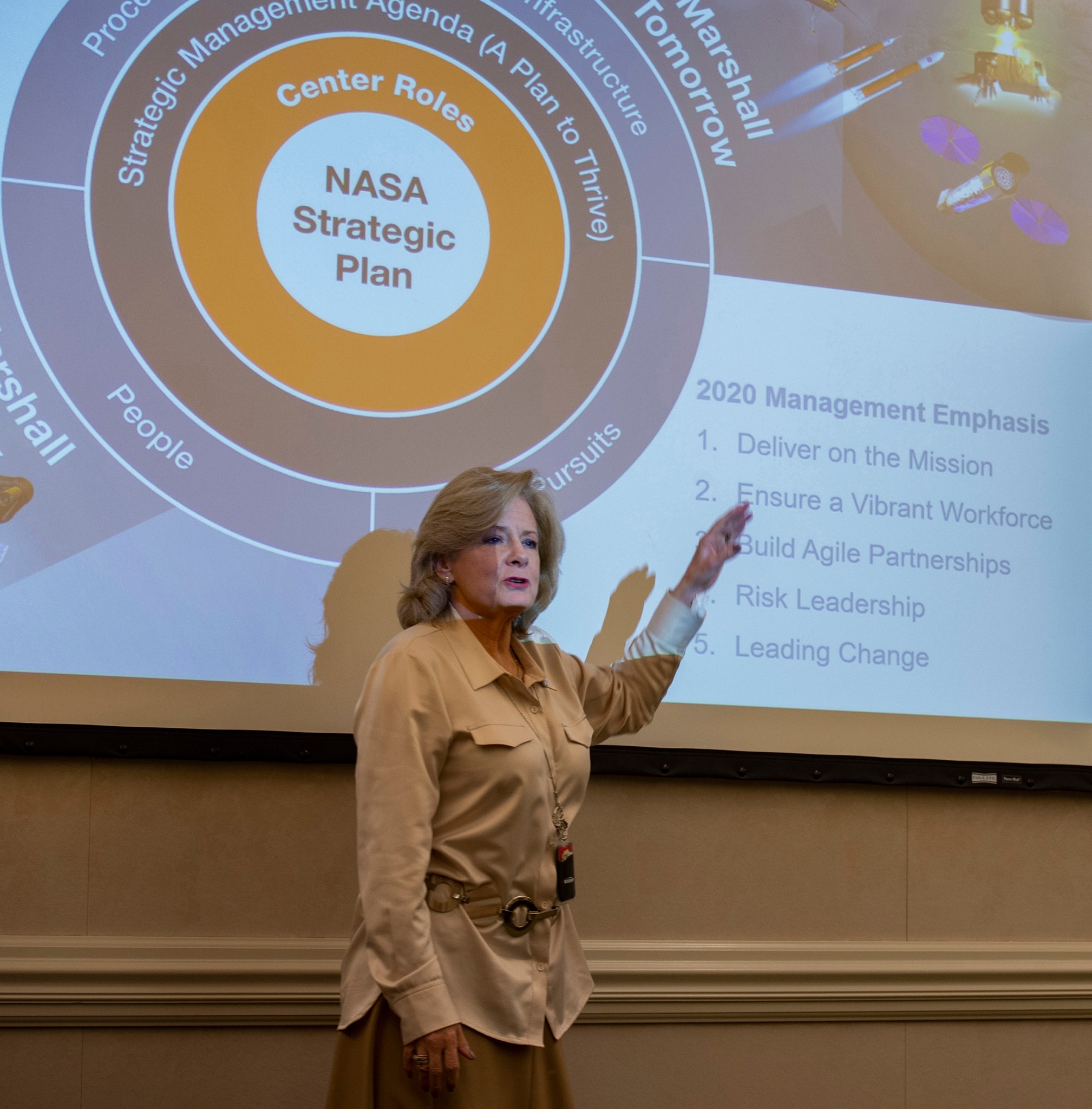
Because of the challenging and important work that we do, the nation can clearly see our progress. In December, technicians at Michoud Assembly Facility assembled the core stage that will fly on Artemis I. An upcoming milestone will be another historic achievement: The full-duration Green Run test of the core stage and its four engines at Stennis Space Center. This critical flight hardware for Artemis I has been delivered, with the test series is underway.
All of these significant accomplishments are engineering feats of cooperation and teamwork, a testament to our excellent team and partners. The work we are doing continues to cement Marshall as a leader in engineering, technology and space exploration, now and for decades to come.
Marshall made international news last year when we were selected to lead the agency’s new Human Landing System Program. The presidential budget request announced earlier this month will give us the resources we need to build a human lunar landing system for the first time since Apollo! The budget request, one of the strongest in NASA’s history, also recognizes that Marshall is essential to the success of the Artemis mission and America’s space exploration goals.
The budget request allows our work in low-Earth orbit and beyond to continue, like the trailblazing missions our science teams are pursuing. The upcoming launch of the Imaging X-ray Polarimetry Explorer will expand on what the Chandra X-ray Observatory has done for the past 20 years by providing valuable insight into our understanding of deep space objects, such as supermassive black holes.
While we look to the Moon with an eye toward Mars, 2020 also marks a scientific milestone. Our nation will celebrate 20 years of continuous human presence in space aboard the International Space Station. This wouldn’t be possible without our ISS team, which is essential to enable future NASA astronauts to sustainably live, work and survive on the surface of the Moon and, eventually, Mars.
In this exciting and challenging time, Marshall is building on our contributions to America’s space program to benefit humanity, our nation and our local communities. Our success lies with our ability to inspire and recruit the next generation of engineers, scientists, technicians and program managers. In 2020, Marshall will continue to focus our efforts on encouraging Alabama’s students to pursue careers in science, technology, engineering and math fields, and we will do this through many events this spring, including the FIRST Robotics Competition, Student Launch, NASA Human Exploration Rover Challenge, and ongoing internships and pathway program initiatives.
Every day, I am filled with pride for what you are doing as we strive to make the impossible possible. Delivering on our mission today, and in the future, is critical. With our workforce leading these cutting-edge projects that are essential to the Artemis mission, it’s clear that the path to these deep space destinations continue to run through Marshall.
Singer is director of Marshall Space Flight Center.
Marshall Team Members Listen Close, Learn About Interior of Mars
By Will Bryan
NASA’s InSight Mars lander is completing its first Earth year on the planet, and scientists are listening closely as Mars reveals a few of its secrets. The initial results from the mission were released in a set of papers Feb. 24.
Brad Zavodsky is the mission manager for InSight as part of NASA Marshall Space Flight Center’s Planetary Missions Program Office. Marshall’s chief scientist, Renee Weber, is a co-investigator on the mission and has been part of InSight since its inception in 2010.
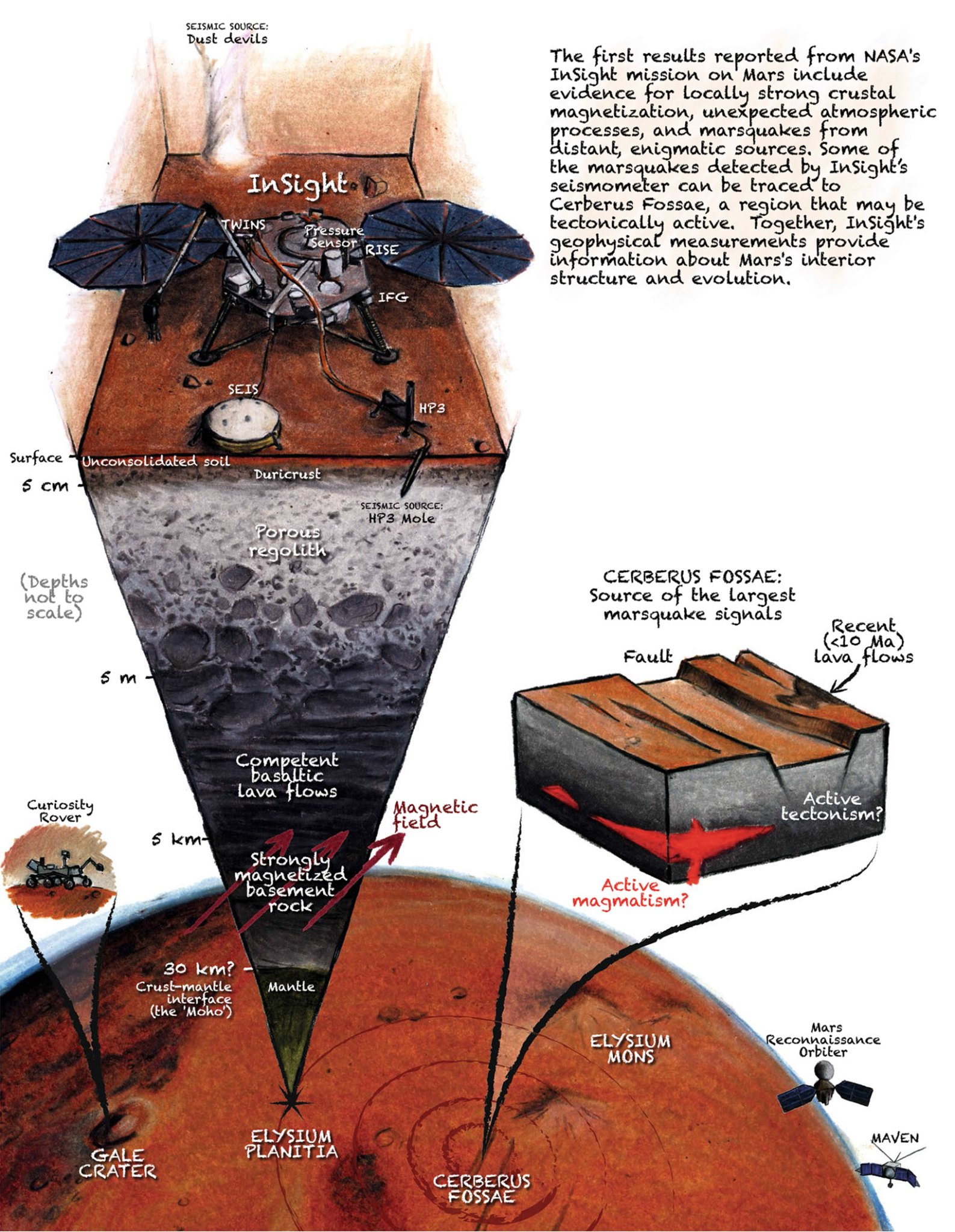
“InSight is a geophysics mission. Geophysics is one of the ways we can probe the interior of a planet,” Weber said. “From orbit, we can take pictures of the surface and track various surface processes, geology and atmospheric variations, but the only way to way to tell what’s happening in the interior is to actually land on the surface and deploy instruments that can probe the internal structure.”
In order to study Mars’ interior, InSight has three primary instruments — the Seismic Experiment for Interior Structure (SEIS), which is detecting and recording seismic events, including more than 400 marsquakes; the Heat Flow and Physical Properties Probe (HP3), which was designed to measure heat flow from the interior of the planet — but is experiencing difficulty reaching its depth goal; and the Rotation and Interior Structure Experiment (RISE), which measures the planet’s wobble and is still collecting data for analysis.
The number of seismic events is higher but the intensity lower than scientists anticipated.
“We were expecting to see more larger quakes,” Zavodsky said. “In fact, some of the science requirements need larger quakes to be able to understand the interior structure.”
Most of the marsquakes detected were between magnitudes 3-4, and no marsquakes more than magnitude 4 have been detected. Quakes on Earth of similar intensity occur daily and are often felt by people in the area where they occur, but cause only minor damage. Larger quakes penetrate deeper into a planet’s interior, and may eventually hit boundaries between the crust and mantle, and the mantle and core. Those interactions can be seen in seismic recordings and tell scientists how deep those boundaries are.
Scientists are also using a suite of secondary instruments on the lander to learn more about the environment where InSight landed — including the local magnetic field and weather conditions. The magnetic field around the lander is 10 times stronger than the strength indicated by Mars orbiters.
InSight measures wind speed and direction, and air pressure nearly continuously. The science team also studied whirlwinds — sometimes called dust devils — in the area. In conjunction with SEIS, they even determined the size and intensity of a dust devil that passed within 22 yards of the lander.
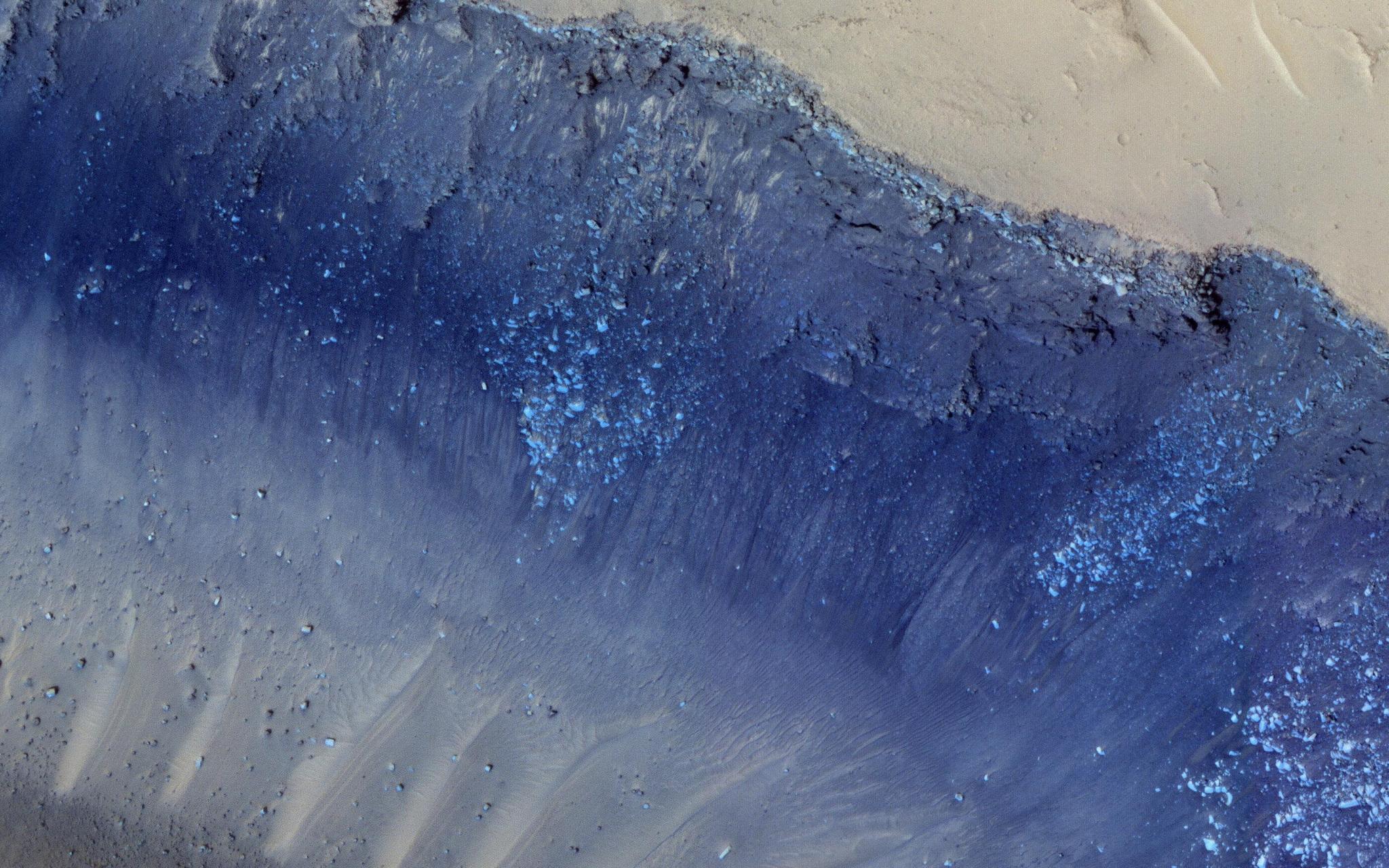
While most of InSight’s instruments are in good operating condition, the team has experienced difficulty with HP3. Designed to penetrate 5.5 yards beneath the Martian surface, the probe has been unable to reach more than 0.77 yards. The team did find a silver lining as it works on a final effort to accomplish the instrument’s primary science goals.
“Through the lack of penetration for the probe’s mole, we’re actually learning a lot more about the soil properties than we would have otherwise understood,” Zavodsky said.
InSight is currently halfway through its primary mission, planned for one Martian year — approximately two Earth years. The team is already discussing the multitude of science investigations that could done during an extended mission.
“It’s a solar-powered mission, so as long as those solar panels keep generating power, we could go for many more years,” Weber said. “This could be a very long-lived observatory.”
The Planetary Missions Program Office at Marshall manages the Discovery Program for NASA’s Science Mission Directorate’s Planetary Science Division, including the schedule, costs and risks of the mission during development. Zavodsky’s team now focuses their efforts on understanding the health, status and progress of the mission and helps ensure the mission is accomplishing its goals with the resources needed.
As scientists continue to collect and analyze data from the Mars lander, the results will open windows into the history and evolution of the Red Planet and provide understanding into the formation and evolution of the other rocky bodies in the solar system, including Earth and the Moon.
Follow the latest from the InSight mission here.
Bryan, an ASRC Federal/Analytical Services employee, supports the Office of Strategic Analysis & Communications.
Marshall Celebrates Contributions by Workforce Alums of Historically Black Colleges, Universities
By Rick Smith
Each February, NASA’s Marshall Space Flight Center honors Black History Month with a celebration of its diverse workforce — the men and women who design, build and test the rockets, engines, space technologies and science mission hardware that continue to expand humanity’s reach into the cosmos.
“Visibility and representation matter,” said Marshall Associate Director Steve Miley, addressing a Black History Month assembly Feb. 18. “We understand and value what diversity, inclusion and equality bring, not just to our agency, but to our mission … and we continue to strive to create a work environment where everyone can thrive.”
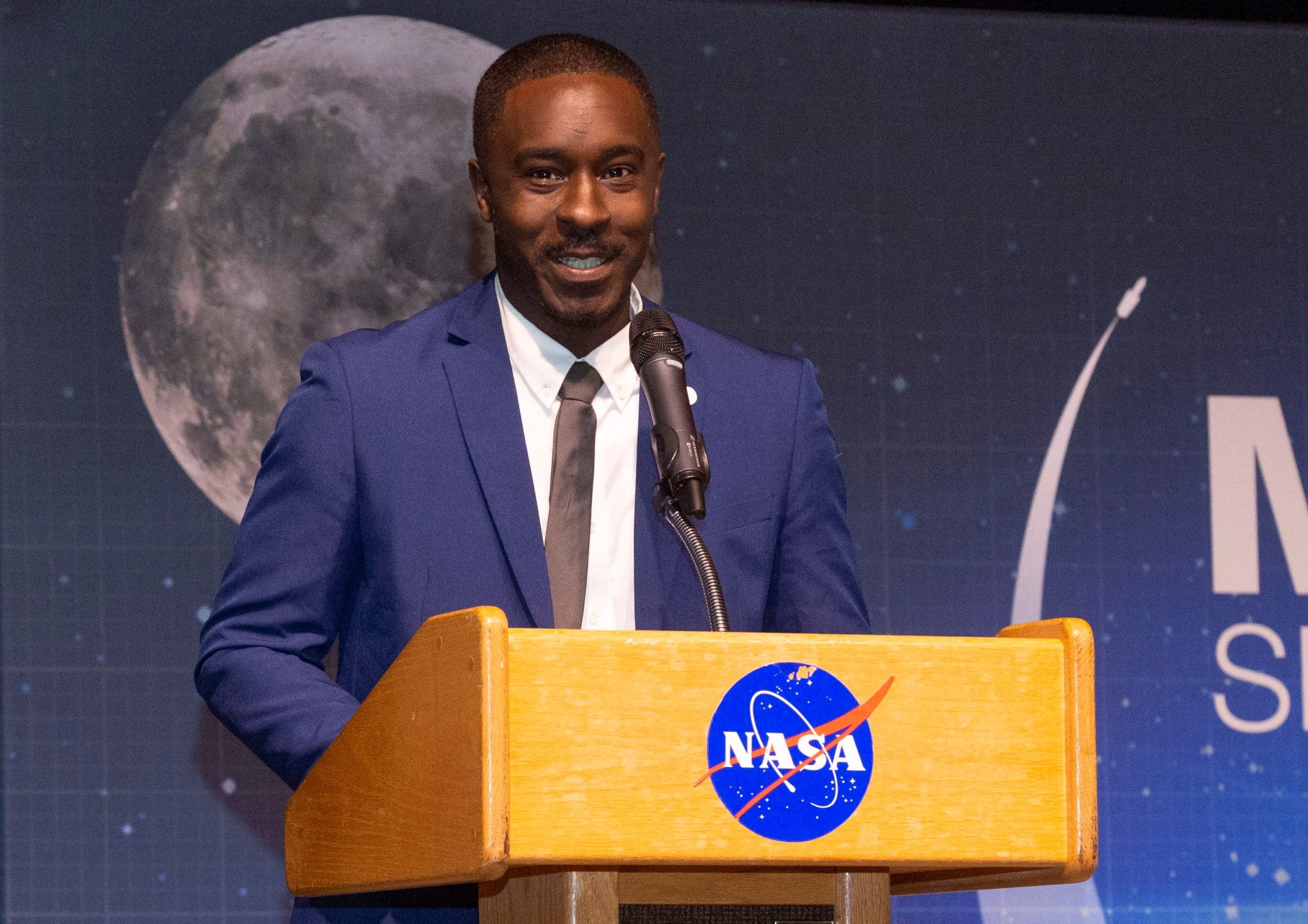
This year, Marshall turned its commemorative spotlight on a vital resource that is, per its 2020 theme, “fueling the mission”: Historically black colleges and universities.
HBCUs — defined by the Higher Education Act of 1965 as “any historically black college or university established prior to 1964, whose principal mission was, and is, the education of black Americans …” — account for 3% of all postsecondary higher education institutions in the United States.
According to the National Science Foundation, however, HBCUs are responsible for 16% of all science-related bachelor’s degrees awarded to African American students. And a 2014 study reported that HBCUs accounted for 10 of the top 20 colleges awarding bachelor’s degrees in STEM fields — science, technology, engineering and mathematics — to black graduates.
That impact is plainly evident at Marshall, where more than one in four civil service employees who identify as a minority are graduates of an HBCU or minority-serving institution. These alums account for nearly 7% of the total Marshall civil-service workforce.
Bobby Watkins, manager of Marshall’s Human Exploration Development & Operations Office, is a graduate of Albany State University in Albany, Georgia. “The experience wasn’t just about a community of like-minded students, but a faculty dedicated to mentoring and coaching us, to giving us a strong foundation to build our lives on,” he said.
Watkins joined NASA in 1986 as a mission operations engineer at NASA’s Johnson Space Center, and praises how far the federal system has come in ensuring, “we learn from everyone, listen to every voice,” he said.
Ruth Jones, who graduated from the University of Arkansas at Pine Bluff in 1994, said the guidance she received there helped shape her career. “I liked math. I was a problem-solver,” said Jones, now Marshall’s Industrial Safety Branch chief and acting deputy director of NASA’s Michoud Assembly Facility. “My school channeled my passion, pointed me at opportunities and showed me how to contribute in a meaningful way.”
A new video created by Marshall’s Office of Diversity and Equal Opportunity showcases these individuals and more: Hansel Gill, a graduate of Oakwood University in Huntsville, now managing Space Launch System subsystems for core stage and upper stage production; Albanie Bolton, a graduate of Alcorn State University in Lorman, Mississippi, now avionics lead discipline engineer supporting RS-25 engine work for the SLS; and Kim Solomon, a graduate of Savannah State College in Savannah, Georgia, now the deputy program manager for IT services in Marshall’s Office of the Chief Information Officer.
All these HBCU graduates work to help turn new classes of HBCU students into future engineers and scientists — and also to turn the current generation of NASA workers into tomorrow’s leaders.
“It’s a twofold mission,” Watkins said. “I’m responsible for molding and building the next crop of diverse, experienced leaders coming up through the ranks right now. I also have to look beyond them, at the students just beginning their journeys. That means doing personal outreach, commencement speeches and visiting classrooms to talk about my experience and the opportunities available to them in government, in NASA.”
“It’s about giving back,” Jones agreed. She goes home often to tiny West Helena, Arkansas, to speak to high school students, some occupying the very same seats she once sat in. “This talent pool is wider than people realize,” she added. “And far deeper.”
NASA and Marshall work to engage and inspire underrepresented populations through a wide variety of education initiatives, internships and other STEM activities. The Minority University Research and Education Project, for example, awards multiyear grants to assist minority institution faculty and students in vital mission research. Marshall’s Black History Month events and other diversity-themed activities and celebrations are organized by the Office of Diversity and Equal Opportunity.
Smith, an ASRC Federal/Analytical Services employee, supports the Office of Strategic Analysis & Communications.
Final Test of Orion Motor a Spectacular Success
When NASA astronauts blast off for their voyage to the Moon on the Orion spacecraft during Artemis missions, they’ll have protection in the form of the launch abort system, which is designed to carry crew to safety in the event of an emergency during launch or ascent atop the agency’s Space Launch System rocket.
On Feb. 25, NASA successfully tested the attitude control motor, which is built by Northrop Grumman and provides steering for Orion’s launch abort system, at the company’s facility in Elkton, Maryland. The test qualified the motor for human missions, beginning with Artemis II.
Engineers from NASA’s Marshall Space Flight Center oversaw preliminary motor testing.
“We’re extremely proud of NASA’s successful attitude control motor test,” said Giuseppe Balint, Launch Abort System Attitude Control Motor Propulsion lead at Marshall. “The motor performed well in its 30-second hot fire test. This was the third and final test and qualified the motor to fly on Orion.”
During the test, eight high-pressure valves directed more than 7,000 pounds of thrust generated by the solid rocket motor in multiple directions while firing at freezing conditions, providing enough force to orient Orion and its crew for a safe landing.
The launch abort system consists of three solid rocket motors: The abort motor pulls the crew module away from the rocket; the attitude control motor; and the jettison motor, which ignites to separate the launch abort system from Orion prior to parachute deployment and to ensure a safe crew landing.
Last year, NASA demonstrated the launch abort system in a full-stress test known as Ascent Abort-2. A booster sent a test version of Orion to an altitude of 31,000 feet to demonstrate the motor system worked as planned during the point of launch when the spacecraft experiences the greatest aerodynamic forces. In 2010, NASA tested the launch abort system’s functionality in Pad Abort-1, a test that showed the motors can work if there’s a problem on the pad before the rocket launches. These tests serve to assess and refine many of the systems critical to the safety of astronauts who will travel in Orion.
NASA has qualified the jettison motor, and has completed two of the three tests to qualify the abort motor. All three motors on the launch abort system will be qualified for crewed flights following the final abort motor test ahead of Artemis II, another step that brings NASA and Orion closer to sending the first woman and next man to the Moon by 2024.
Team Members Recognized by Air, Space and Missile Defense Association
By Will Bryan
Team members at NASA’s Marshall Space Flight Center are known for their excellence in enabling space exploration. At an awards ceremony Feb. 25, Joseph Musick, Alex Few and the Space Launch System Contracting Office from Marshall were honored at the Air, Space and Missile Defense Association’s annual luncheon in Huntsville.
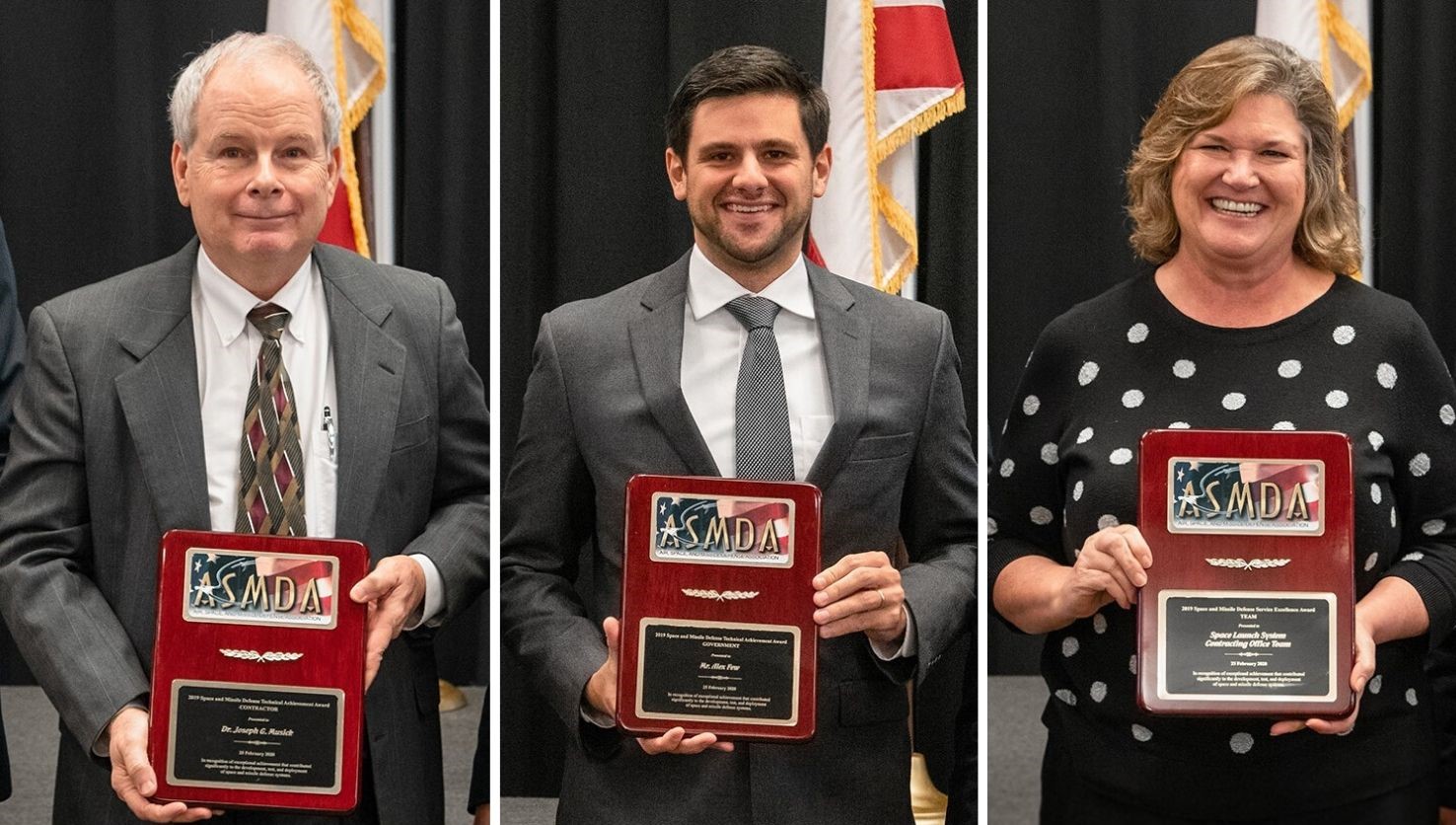
Musick, a physician in Marshall’s Environmental Engineering and Occupational Health Office, was awarded a Technical Achievement Award–Contractor for exceptional leadership of the Marshall Medical Center services that help keep Marshall and other Redstone Arsenal workers healthy, strong and capable of carrying out important missions for the nation. More information about Medical Center services provided can be found here.
Few, an engineer in Marshall’s Space Systems Department, was presented a Technical Achievement Award for his engineering and leadership efforts on the Near-Earth Asteroid Scout solar sail mission. NEA Scout is one of 13 secondary payloads that will launch on Artemis I – the first flight of NASA’s Space Launch System rocket and Orion spacecraft. Few worked on the design and integration of the NEA Scout’s complex mechanisms that will enable a 282-square-foot solar sail to deploy from a CubeSat the size of a large shoe box. His contributions were critical to the successful completion of NEA Scout’s flight sail deployment test in June 2019.
The SLS Contracting Office was presented a Service Excellence–Team Award for its leadership and dedication to NASA’s human exploration efforts through a rapidly changing time. Its contributions to the program play a critical role in NASA’s goal of sending the first woman and next man to the Moon as part of the agency’s Artemis Program. Kellie Craig accepted the award on behalf of the team.
The Air, Space and Missile Defense Association is a nonprofit, nonpolitical, educational and scientific organization that seeks to promote the security of the United States. It was formed in Huntsville in 1995.
Bryan, an ASRC Federal/Analytical Services employee, supports the Office of Strategic Analysis & Communications.
Marshall Talks Future Science, Engineering Endeavors at Annual Expo
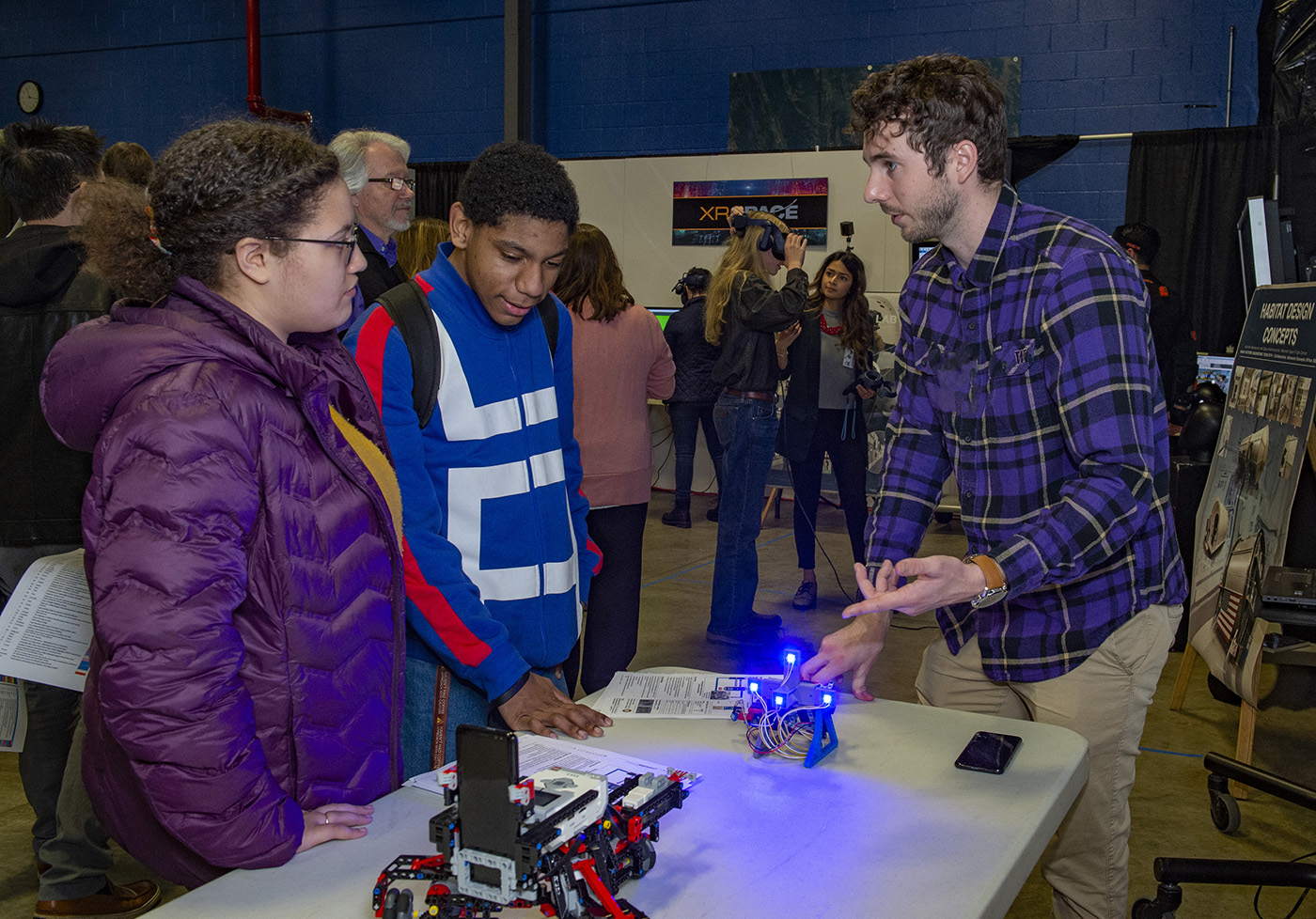
Alexander Summers, right, an engineer in the Navigation, Guidance and Control Systems Division at NASA’s Marshall Space Flight Center, talks with Amber George, left, and Steven Hughes, students and FIRST Robotics competitors from Columbia High School in Huntsville, during Marshall’s Jamboree and Poster Expo on Feb. 26. The annual event featured some 150 presenters sharing the latest advances in Marshall engineering, research and technology, and how their work could impact the Artemis Program to return explorers to the Moon by 2024 and aid countless other projects to benefit spaceflight and life on Earth. The event is co-hosted by Marshall’s Engineering Directorate and Science and Technology Office. (NASA/Emmett Given)
College Leaders Get Insight into Marshall Programs, Capabilities
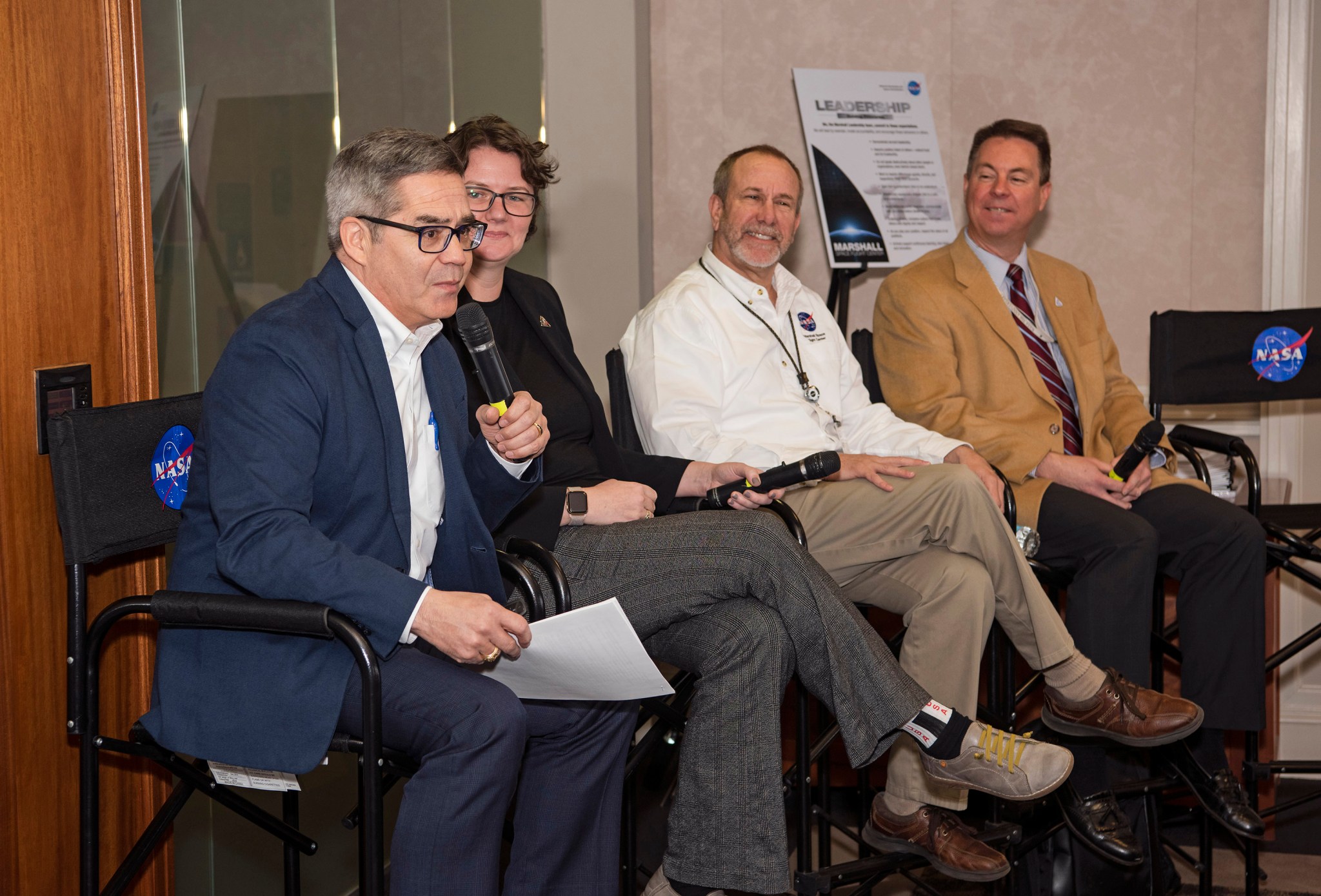
Sam Ortega, left, manager of the Partnerships Office at NASA’s Marshall Space Flight Center, moderates an Artemis Program panel featuring, second from left, Renee Weber, Marshall chief scientist; David Beaman, manager of Marshall’s Systems Engineering & Integration Office; and Don Krupp, associate program manager for the Human Landing System Program, during Universities of the Tennessee Valley Corridor activities Feb. 27 at Marshall. Leadership staff from eight universities and 10 junior colleges in Alabama, Tennessee and Kentucky also heard presentations on Office of STEM Engagement opportunities, partnership opportunities, Marshall’s Technology Transfer Office, the NASA software catalog and Marshall’s Advanced Concepts Office. The group toured several Marshall facilities to learn more about center capabilities. The Tennessee Valley Corridor, founded in 1995, is a regional economic development organization that encourages ongoing collaboration in energy, science, environment, space, national security and education. (NASA/Charles Beason)
Three Team Members Recognized as ‘HEO HErO’
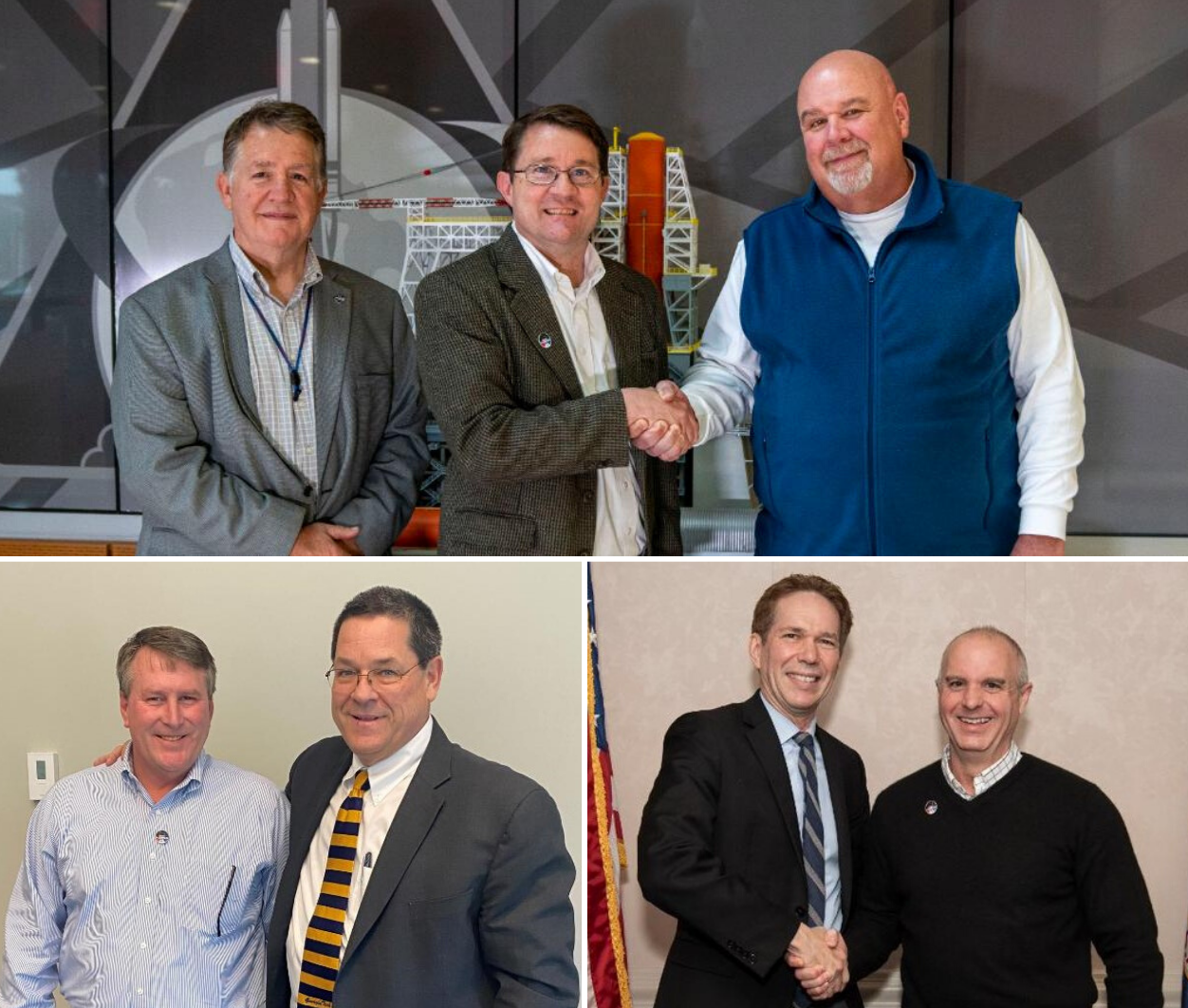
Three team members from NASA’s Marshall Space Flight Center are honored as HEO HErO – a recognition from Douglas Loverro, NASA associate administrator for the Human Exploration and Operations Mission Directorate. Top photo: David Adcock, center, ground support equipment cost accounting manager for the Space Launch System Stages Office, is congratulated by Preston Jones, left, Marshall associate director, technical, and John Honeycutt; manager of the SLS Program; left photo: Marshall’s Robert Rutherford, left, group lead in the Transportation and Logistics Engineering Office, is congratulated by Roy Malone, Marshall’s director of Center Operations; right photo: Paul McConnaughey, left, Marshall’s deputy director, congratulates budget analyst Terry Hunter. HEO HErOes from across the agency are spotlighted on Loverro’s Twitter account. (NASA)
Marshall Director Singer Welcomes FBI’s Information and Technology Executive Team
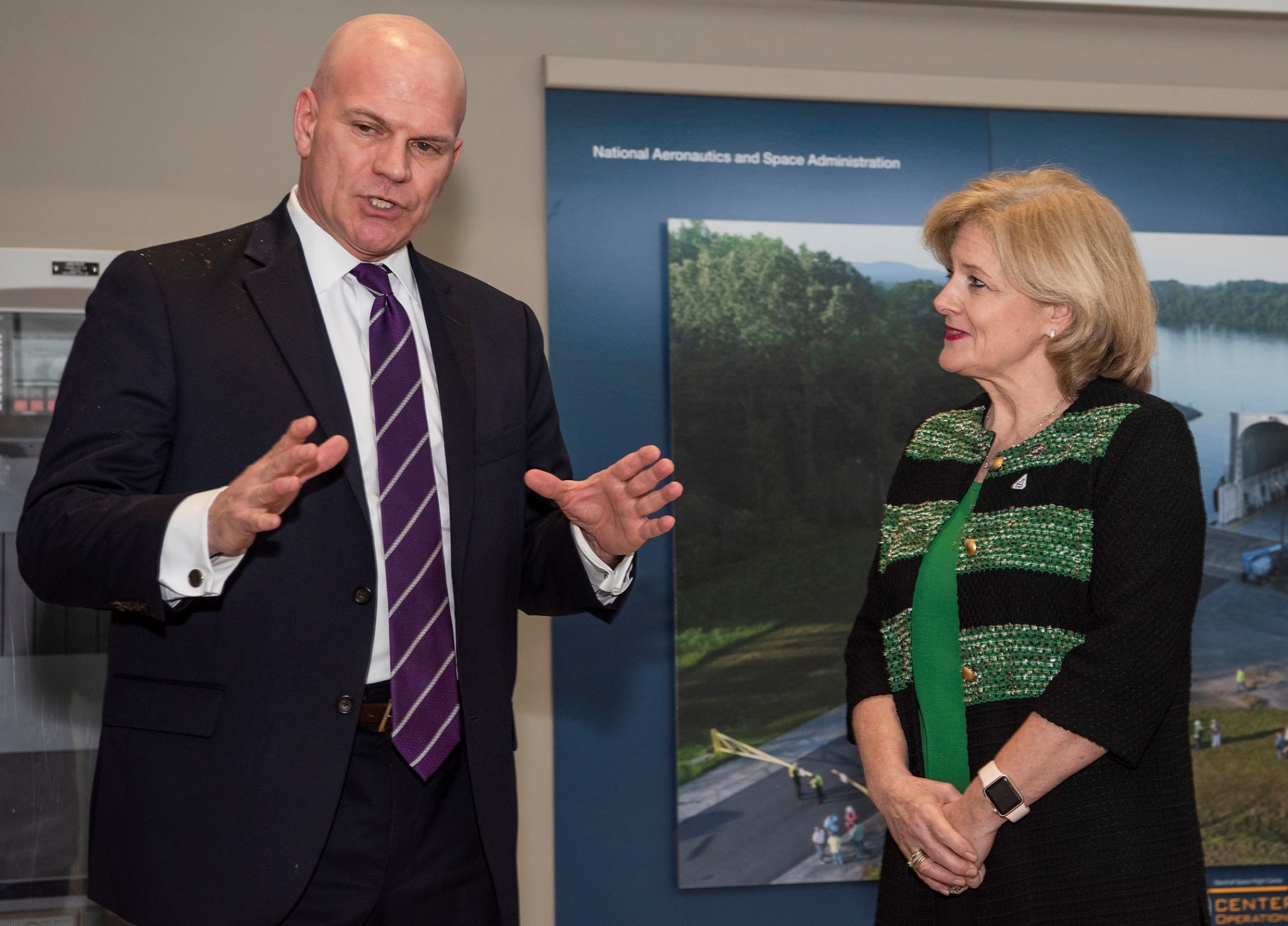
Richard L. Haley, left, executive assistant director of the FBI’s Information and Technology Branch, speaks with NASA’s Marshall Space Flight Center Director Jody Singer during a Feb. 18 tour of the center. Haley was part of a 20-person FBI executive team that visited the Space Launch System test stand, Payload Operations Integration Center and the Environmental Control Life Support Systems in order to learn about Marshall’s programs and capabilities. The FBI is building a 243-acre campus on Redstone Arsenal, along Fowler and Dodd roads, that is scheduled to open in 2021. The campus will host a workforce that is expected to grow to more than 4,000 over the next decade. (NASA/Charles Beason)
This Week in NASA History: STS-109 Launches on 4th Hubble Servicing Mission – March 1, 2002
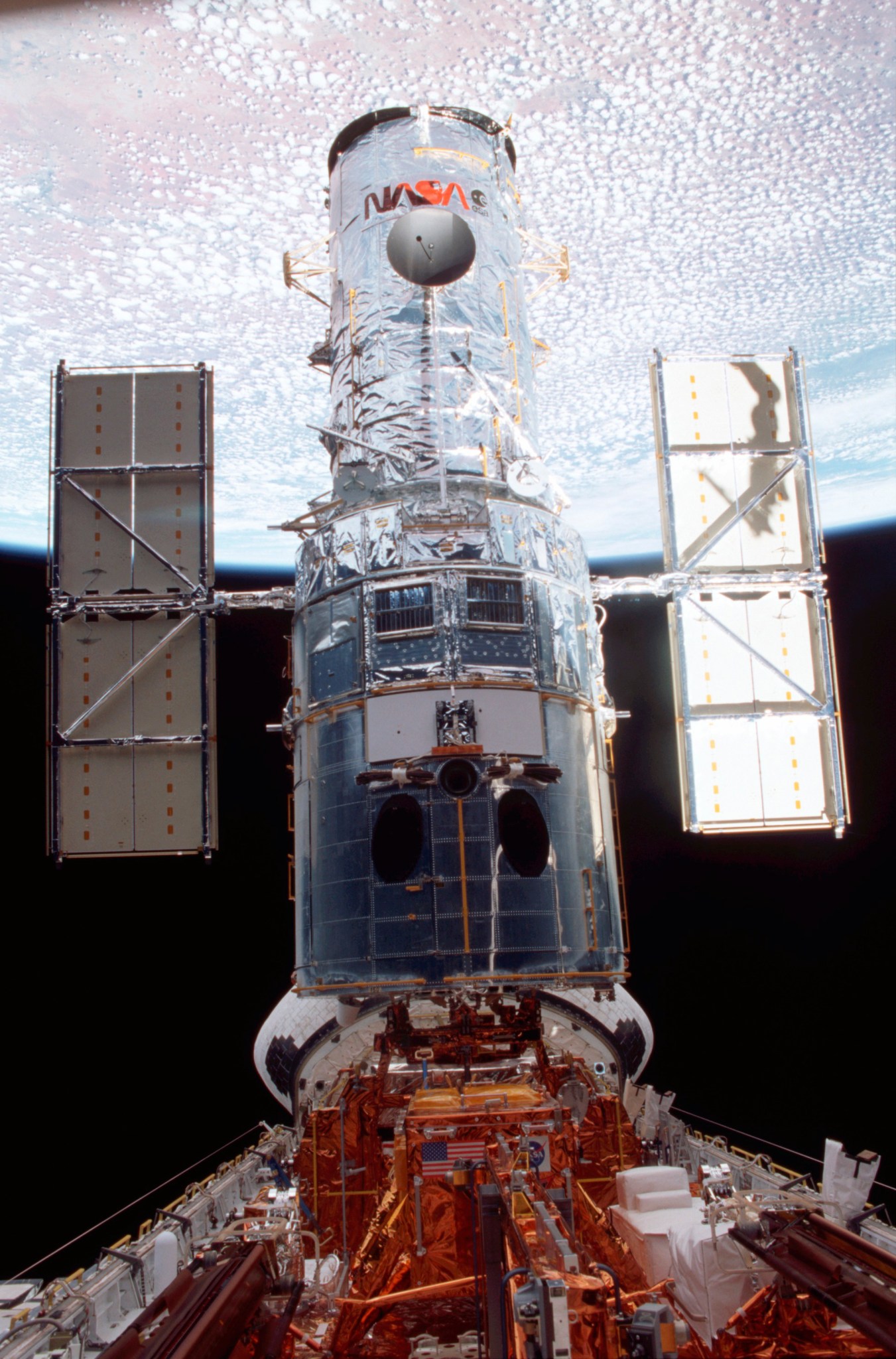
This week in 2002, space shuttle Columbia, mission STS-109, launched from NASA’s Kennedy Space Center on the fourth Hubble Space Telescope Servicing Mission. During the five days of service and upgrade work, astronauts replaced Hubble’s solar panels and installed the Advanced Camera for Surveys, which took the place of Hubble’s Faint Object Camera, the telescope’s last original instrument. Here, Hubble is shown in the cargo bay of Columbia. The NASA History Program is responsible for generating, disseminating and preserving NASA’s remarkable history and providing a comprehensive understanding of the institutional, cultural, social, political, economic, technological and scientific aspects of NASA’s activities in aeronautics and space. For more pictures like this one and to connect to NASA’s history, visit the Marshall History Program’s webpage. (NASA)

























